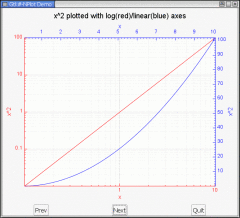
There would be a problem with this approach if the discrete-time slow manifold happened to have any normal instabilities such instabilities would carry discrete trajectories away from the slow manifold, and the good approximation properties would break down. Provided initial conditions are selected near the slow manifold, the integrator provides a good approximation of the original system. Then a canonical symplectic integrator for the larger system is identified that has approximately the same slow manifold. First, the original non-canonical Hamiltonian system is embedded in a larger (essentially) canonical system as a slow manifold. In this talk, I will present a general approach to structure-preserving integration of noncanonical Hamiltonian systems on exact symplectic manifolds. Much less is understood about symplectic integration in the general non-canonical case, which occurs more frequently in practice. Symplectic integration is routine in canonical coordinates, where the flux tensor takes the simplest possible form. A time integrator for a non-dissipative system is symplectic when it freezes flux exactly. Hamiltonian) dynamical systems freeze flux in phase space, just as highly-conductive plasma flows freeze magnetic flux. As examples we provide design points corresponding to CMFX and an upgraded device capable of achieving breakeven. This provides a self-consisent basis for a 0D ``systems'' model of a centrifugal mirror machine. Corrections to the parallel electric field are computed to ensure all losses are ambipolar. We also use this magnetic equilibrium to compute approximate end loss rates and electrical properties of the plasma.

This solution is used to shed light on the ultimate limits of rotation in such plasmas. We will highlight a new semi-analytical calculation for the equilibrium of such a system derived in the asymptotic limit of a rapidly-rotating plasma. We will outline the key advances of this experiment over prior rotating mirrors, and give an updated physics basis for our modelling of the experiment and a future reactor. This prompts a deeper inquiry into the underlying confinement and stability properties of centrifugal mirrors as a class of devices. Due to the success of the Maryland Centrifugal Experiment (MCX) and initial theoretical analyses, the Centrifugal Mirror concept is being further explored by the construction of the Centrifugal Mirror Fusion Experiment (CMFX) at the University of Maryland.


 0 kommentar(er)
0 kommentar(er)
